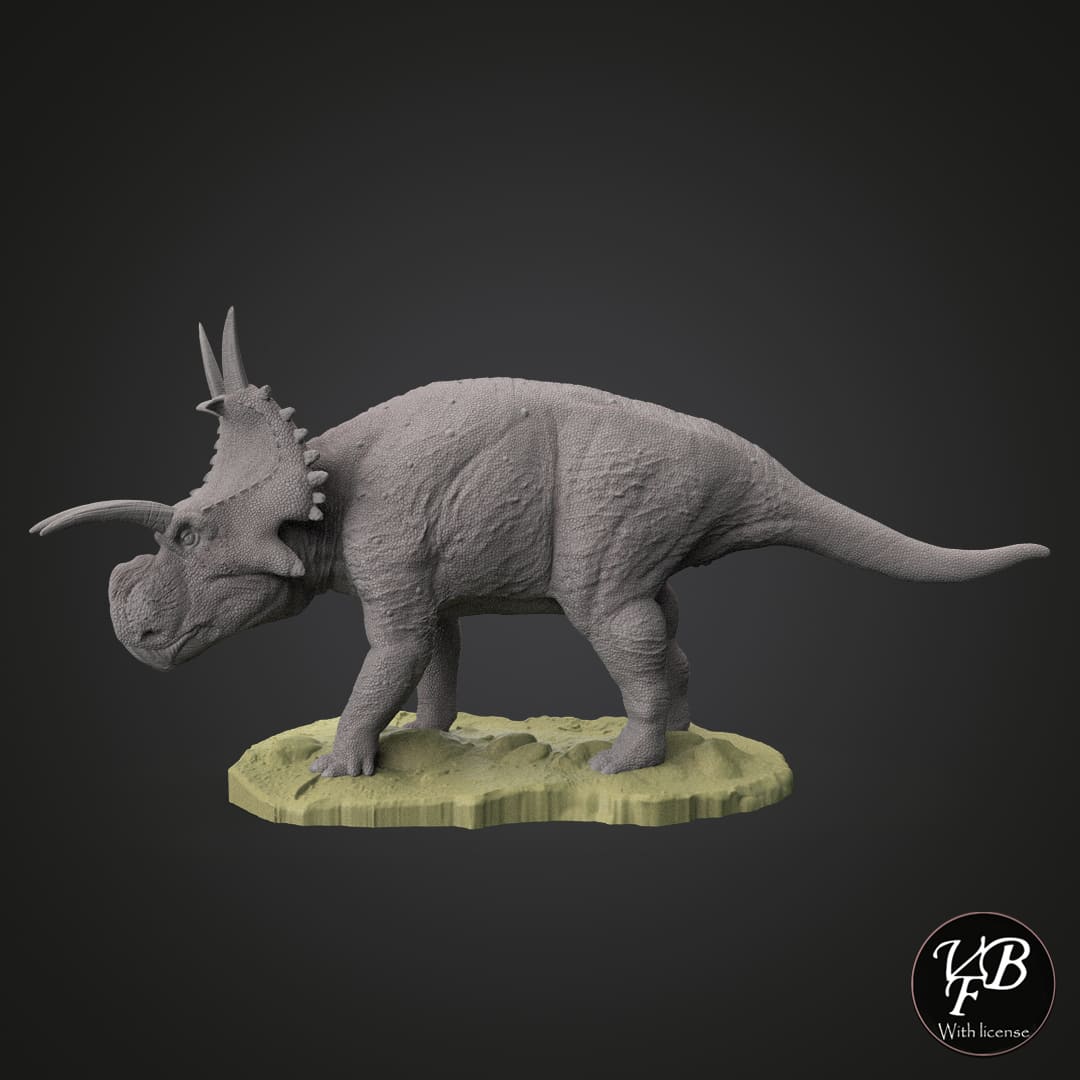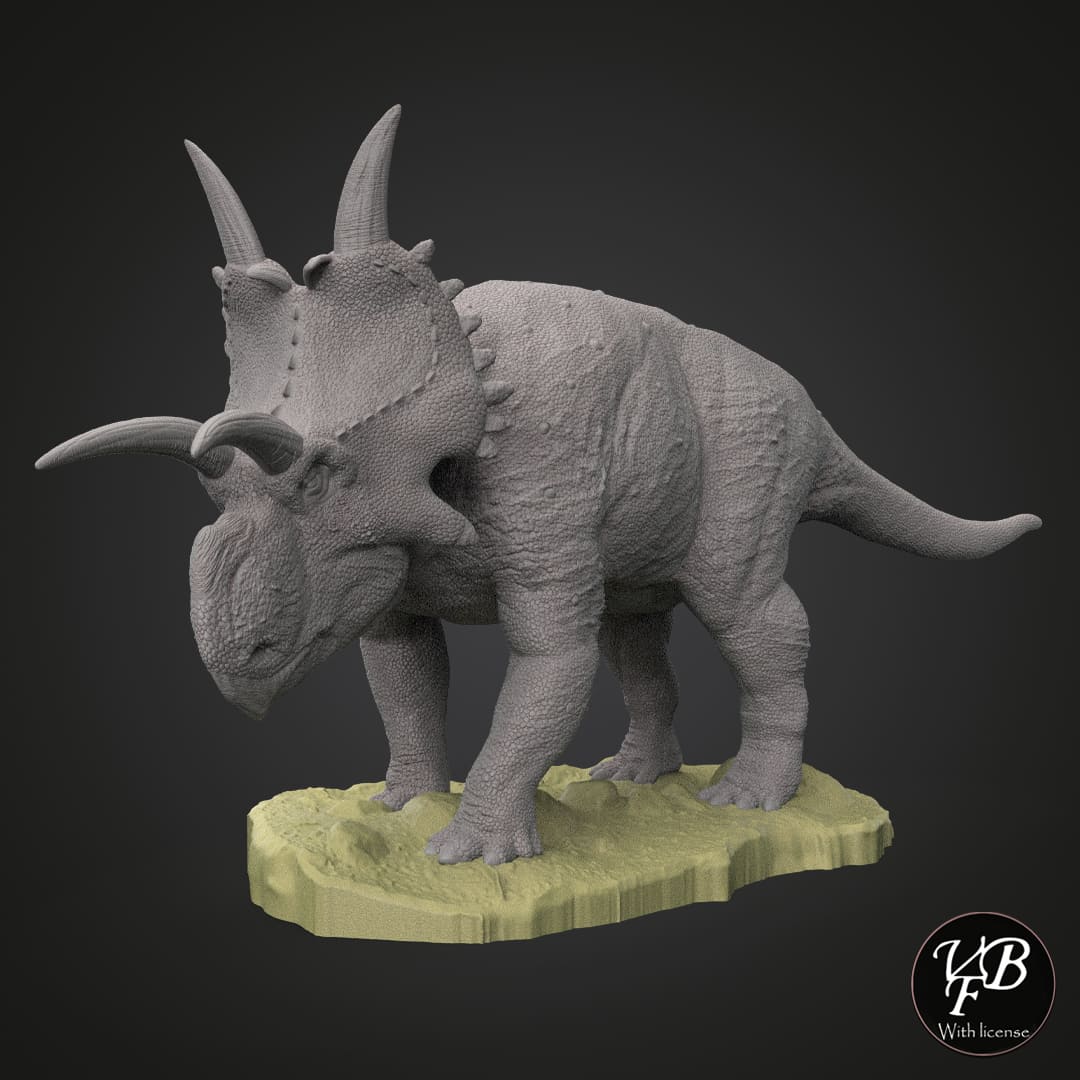




Xenoceratops foremostensis
Do you want another scale?
Contact us and we will make it possible!
How will you receive your replica?
In the unprimed and primed variants, you will receive the complete replicas except for the large models, where you will receive an assembly kit.
In the hand-painted variant, the replicas will be delivered complete.
How does the painting service work?
We created a private chat for you where you will have direct communication with our painter , being able to choose your preferred color schemes and follow the hand painting process closely.
Pairs well with

Xenoceratops foremostensis
If you have any questions, you are always welcome to contact us. We'll get back to you as soon as possible, within 24 hours on weekdays.
Shipping Information
Visit our shipping policy page to find all the information.
Customer Support
Give us a few details and we’ll offer the best solution. Connect by chat or email.
We are available 24/7.
FAQ’s
Visit our FAQ's page to find answers to common questions.
Contact Us
We'd love to hear from you. We are here to help. Visit our contact page to send us a message.
Product details
This dinosaur was of considerable size, with an estimated length of approximately 6 metres and a weight of around 2 tonnes. Like other members of the ceratopsian family, Xenoceratops foremostensis was a quadrupedal herbivore that fed on low-lying plants such as ferns, cycads and flowering plants. Its horny beak was ideal for cutting vegetation before grinding it up with its teeth in dental batteries, which were designed to process fibrous plant material.
The most striking feature of Xenoceratops was its skull, which featured a prominent, spine-adorned bony frill. The frill, large and extending towards the back of the skull, was decorated with two pairs of large horns that protruded from the edges of the frill, a feature that set it apart from other ceratopsians of its time. In addition, it had a pair of shorter horns above the eyes and a nasal horn, although these were not as prominent as in other ceratopsians such as Triceratops.
The purpose of these bony structures has been the subject of debate among paleontologists. Although horns and frills in ceratopsians could have had defensive functions, it is thought that in the case of Xenoceratops foremostensis, the frill and horns would have had a function more related to display or sexual selection, as a means of impressing females or intimidating other males during competition for territory or for mates. They could also have played a role in identification between individuals of the same species.
The environment in which Xenoceratops lived was dominated by rivers and river plains, with vegetation rich in ferns and flowering plants. In this ecosystem it shared its habitat with other herbivorous and predatory dinosaurs. Its contemporaries included other ceratopsians and carnivorous dinosaurs such as tyrannosaurids. Predators would have posed a constant threat to Xenoceratops, although its large size, horns, and herding behavior could have provided it with an effective defense against carnivore attacks.
The discovery of Xenoceratops foremostensis is significant because it expands knowledge about the early evolution of large ceratopsians in North America. Its fossils were found in sediments dating to an earlier time than other better-known ceratopsians, making it one of the oldest ceratopsians from the Late Cretaceous in that region. This find suggests that ceratopsian diversity was already in full development millions of years before giants like Triceratops appeared.
Approximate measurements of Xenoceratops:
- 1:35 scale Complete
- Length 159 mm
- Height 75 mm
- Width 46 mm
- Snout-tail length 171 mm
- 1:20 scale Complete
- Length 277 mm
- Height 131 mm
- Width 80 mm
- Snout-tail length 300 mm
Information about aftershocks
Collector's item ; Hyper-realistic replica, highly detailed and with a high degree of scientific precision.
Made to scale, prototyped in resin and with a scenic base in most of the models offered. If you like miniatures, both for collecting and for painting, we offer you a wide variety of scale replicas; All of them related to dinosaurs, extinct prehistoric fauna and current fauna.
So if you love dinosaurs and animals as much as we do, this is your favorite store to collect and paint them :)
We are authorized distributors of all the replicas and figures we offer. We use 3D printers with 8K - 14K resolution, and high-quality resins with additives to improve hardness and flexibility, thus offering replicas of impeccable quality.
Different scales will be used to make the replicas (depending on the size of the species), although we are open to making other suggested scales upon request as long as they fit in our printing trays, for which you will have to contact us via email and request the required size.
Replicas are supplied with the option of airbrush priming in dark grey. If you require another colour, please let us know which one you prefer in the box with special instructions for the seller. Without priming, we do not guarantee that the resin will accept paint.
We also offer the option of choosing a professionally painted replica, which is agreed upon throughout its development with the painter, through a private chat available.
Complete replica (one piece): We supply complete replicas in those models that are small, and models that are medium, large or not very bulky, will have the prerogative of being presented as a complete replica or assembly kit as the case may be.
Complete replicas will be supplied separately from their base.
Replica assembly kit: We supply replicas whose models are large, very large or bulky, only with this option.
The indicated replicas (generally composed of base, head, body and tail) will come prepared for the subsequent assembly that will be required by the client, by sanding, putty, adhesive or technique chosen by the client.
All replicas are thoroughly inspected before shipping and will be carefully packaged to prevent damage during transport.
Information about the models
The poses of the models aim to represent each character in the most scientifically viable way, thus revealing the life and customs of prehistoric and modern fauna.
Each character has its own personality and develops in different life scenarios; birth, adolescence and play, hunting, feeding, fighting, courtship, death and many other scenes from their daily life, always from the creative perspective of their designers.
Handmade
All orders are individually prepared on the cutter for subsequent prototyping, obtaining a resin part that will require post-processing by manual and ultrasonic cleaning, support removal, ultraviolet curing, labeling and packaging.

We are authorized distributors
We offer both our own physical replicas and those that have been modeled by many of the best 3D designers, in order to offer you the greatest possible variety.
Frequently Asked Questions
If you have any questions about products, orders or shipping, please read our FAQ page to learn more.

